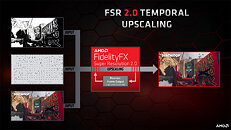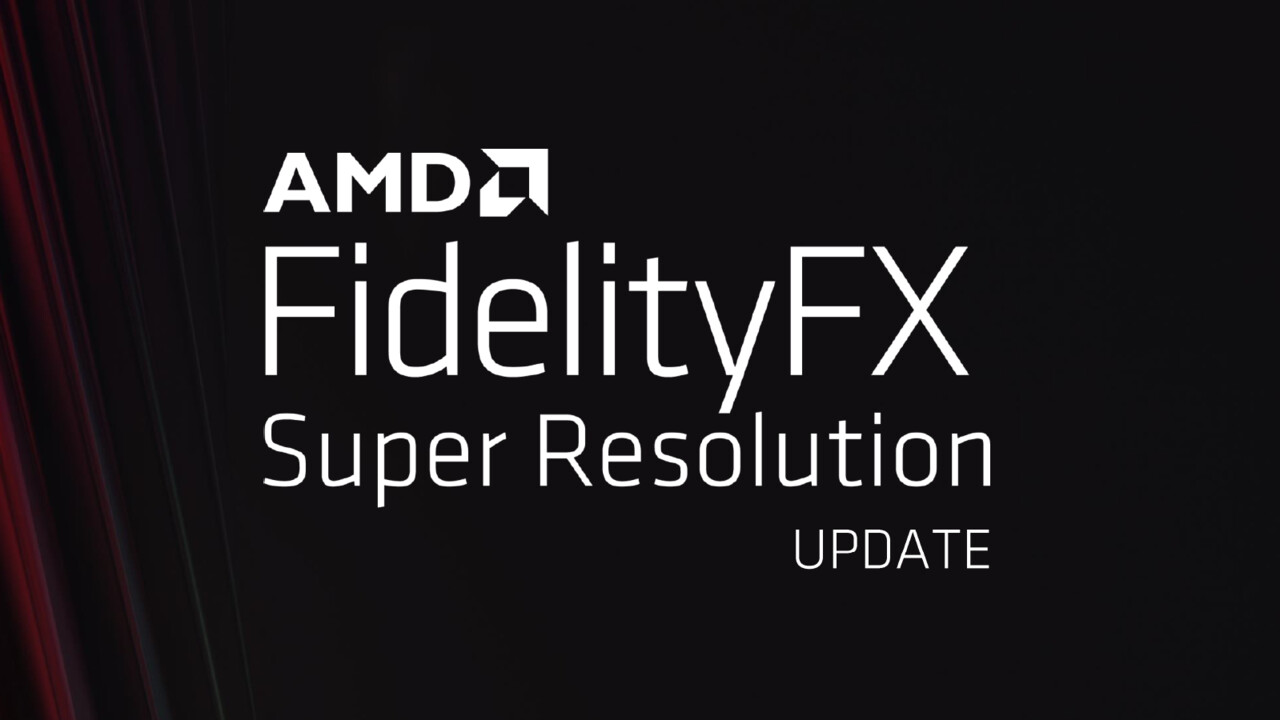- Joined
- Oct 9, 2007
- Messages
- 47,670 (7.43/day)
- Location
- Dublin, Ireland
| System Name | RBMK-1000 |
|---|---|
| Processor | AMD Ryzen 7 5700G |
| Motherboard | Gigabyte B550 AORUS Elite V2 |
| Cooling | DeepCool Gammax L240 V2 |
| Memory | 2x 16GB DDR4-3200 |
| Video Card(s) | Galax RTX 4070 Ti EX |
| Storage | Samsung 990 1TB |
| Display(s) | BenQ 1440p 60 Hz 27-inch |
| Case | Corsair Carbide 100R |
| Audio Device(s) | ASUS SupremeFX S1220A |
| Power Supply | Cooler Master MWE Gold 650W |
| Mouse | ASUS ROG Strix Impact |
| Keyboard | Gamdias Hermes E2 |
| Software | Windows 11 Pro |
AMD today unveiled FidelityFX Super Resolution 2.0 (FSR 2.0), the second major update to the company's ambitious gaming performance enhancement that seeks to improve performance with minimal loss of image quality, by lowering game render resolution, and applying a high-quality upscaling algorithm. The star-attraction with FSR 2.0 is its new upscaling algorithm that leverages temporal data. Data from past generated frames is used to predict and add details to the current frame. This improves image quality across all presets of FSR, and at all resolutions. In some cases, the "Performance" preset of FSR 2.0 may end up looking on par with the "Quality" preset of FSR 1.0. AMD's temporal upscaling algorithm doesn't need any machine-learning hardware on the GPU.
AMD is working to integrate FSR 2.0 with several contemporary game engines, and titles that are both already released or in development. It seems like an upcoming patch of "Deathloop" will add FSR 2.0 support, since the company exclusively used the game in its image-quality comparison previews. AMD will deliver a more elaborate presentation, with an under-the-hood look at how FSR 2.0 works, in its GDC 2022 presentation slated for March 23, 2022. The company is looking to release FSR 2.0 to gamers within Q2-2022 (between April to June).




View at TechPowerUp Main Site
AMD is working to integrate FSR 2.0 with several contemporary game engines, and titles that are both already released or in development. It seems like an upcoming patch of "Deathloop" will add FSR 2.0 support, since the company exclusively used the game in its image-quality comparison previews. AMD will deliver a more elaborate presentation, with an under-the-hood look at how FSR 2.0 works, in its GDC 2022 presentation slated for March 23, 2022. The company is looking to release FSR 2.0 to gamers within Q2-2022 (between April to June).




View at TechPowerUp Main Site








